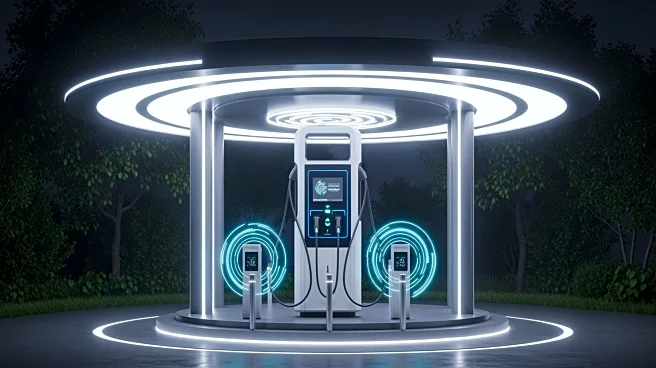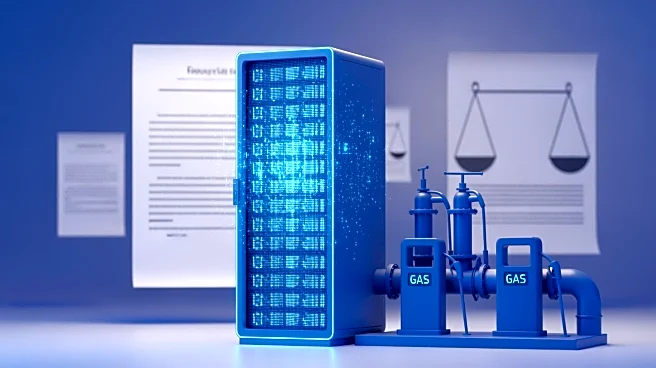What's Happening?
Smackover Lithium, a joint venture between Standard Lithium and Equinor, has filed its first inferred resource report for the Franklin project located in north-east Texas, USA. The report reveals a significant resource of 2.16 million tonnes of lithium
carbonate equivalent, with an average lithium concentration of 668 milligrams per litre. Additionally, the project contains approximately 15.41 million tonnes of potash and 2.64 million tonnes of bromide within a brine volume of 0.61 cubic kilometers. The Franklin project spans around 80,000 acres, with over 46,000 acres currently leased. This development marks a milestone for the joint venture's ambition to produce over 100,000 tonnes of lithium chemicals annually in Texas.
Why It's Important?
The filing of the first inferred resource report for the Franklin project is a significant step in advancing lithium production in the United States, particularly in Texas. The high lithium-in-brine grades reported are among the highest in North America, which positions the project as a key player in the domestic lithium market. This is crucial as lithium is a critical component in battery technology, especially for electric vehicles and renewable energy storage solutions. The inclusion of potash and bromide further enhances the project's value, contributing to the diversification of mineral resources in the region. The development aligns with the growing demand for sustainable and locally sourced minerals, potentially reducing reliance on foreign imports.
What's Next?
The next steps for Smackover Lithium involve enhancing the characteristics of the Upper and Middle Smackover Formation aquifers and evaluating reserve forecasts. This will require drilling new appraisal wells and re-entering inactive wells to gather data for a preliminary feasibility study. Additionally, direct lithium extraction tests on project brine are planned, leveraging insights from Standard Lithium's demonstration plant in Arkansas. The joint venture aims to expand its portfolio with two additional projects in East Texas, which could nearly triple its size in the state. These developments are expected to bolster the joint venture's capacity to meet the increasing demand for lithium and other critical minerals.














